 W
WAdobe Animate is a multimedia authoring and computer animation program developed by Adobe Systems.
 W
WAdobe GoLive was a WYSIWYG HTML editor and web site management application from Adobe Systems. It replaced Adobe PageMill as Adobe's primary HTML editor and was itself discontinued in favour of Dreamweaver. The last version of GoLive that Adobe released was GoLive 9.
 W
WAmaya is a discontinued free and open source WYSIWYG web authoring tool with browsing abilities.
 W
WThe Aphelion Imaging Software Suite is a software suite that includes three base products - Aphelion Lab, Aphelion Dev, and Aphelion SDK for addressing image processing and image analysis applications. The suite also includes a set of extension programs to implement specific vertical applications that benefit from imaging techniques.
 W
WArachne is a discontinued Internet suite containing a graphical web browser, email client, and dialer. Originally, Arachne was developed by Michal Polák under his xChaos label, a name he later changed into Arachne Labs. It was written in C and compiled using Borland C++ 3.1. Arachne has since been released under the GPL as Arachne GPL.
 W
WArachnophilia is a source code editor written in Java by Paul Lutus. It is the successor to another HTML editor, WebThing. The name Arachnophilia comes from the term meaning "love of spiders", a metaphor for the task of building on the World Wide Web.
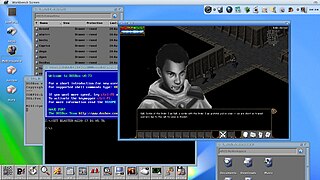 W
WAROS Research Operating System is a free and open-source multi media centric implementation of the AmigaOS 3.1 APIs. Designed to be portable and flexible, ports are currently available for x86-based and PowerPC-based PCs in native and hosted flavors, with other architectures in development. AROS, in a show of full circle, was also ported to the m68k-based Amiga 1200, and there is also an ARM port for the Raspberry Pi series.
 W
Wbzip2 is a free and open-source file compression program that uses the Burrows–Wheeler algorithm. It only compresses single files and is not a file archiver. It is developed by Julian Seward and maintained by Federico Mena. Seward made the first public release of bzip2, version 0.15, in July 1996. The compressor's stability and popularity grew over the next several years, and Seward released version 1.0 in late 2000. Following a nine-year hiatus of updates for the project since 2010, on 4 June 2019 Federico Mena accepted maintainership of the bzip2 project.
 W
WClaris Home Page was one of the earliest true WYSIWYG HTML editors, developed from 1994 on. The project was code-named Loma Prieta. Claris purchased it from San Andreas Systems, reworked it to use the user interface common to all their products, and released it in 1996.
 W
WCoffeeCup HTML Editor is an HTML editor. Originally created by Nicholas Longo and Kevin Jurica, it was first released to the public in August 1996. Until version 12.5 released in 2012, it was capable of WYSIWYG editing.
 W
WCoolTalk was an Internet telephony tool included as a plugin in Netscape Navigator 3.0, released in 1996. It included an answering machine and a shared whiteboard. It offered full-duplex audio, multiple compression formats, including ones targeted at low-bandwidth connections, and message recording. The shared whiteboard supported text and graphics, including TIFF, GIF, JPEG, BMP, EPS, TARGA, RASTER, and SGI files. It was supported on Windows 95, Windows NT, Windows 3.1, MacOS, SunOS, Solaris, HP-UX, Digital Unix, and IRIX.
 W
WCyberdog was an OpenDoc-based Internet suite of applications, developed by Apple Computer for the Mac OS line of operating systems. It was introduced as a beta in February 1996 and abandoned in March 1997. The last version, Cyberdog 2.0, was released on April 28, 1997. It worked with later versions of System 7 as well as the Mac OS 8 and Mac OS 9 operating systems.
 W
WFar Manager is an orthodox file manager for Microsoft Windows and is a clone of Norton Commander. Far Manager uses the Win32 console and has a keyboard-oriented user interface.
 W
WFrame-IT! was an application for developing HTML frames released in 1996 by GME Systems. It featured a user interface in which you could control frame size, the number of frames, frame location, and frame appearance without knowledge of HTML. It allowed completed frames to be copied to clipboard, to be saved, or to be previewed in a browser.
 W
WFrameGang was an applet for developing HTML frames for Netscape released by Sausage Software in April 1996. The program featured a drag-and-drop interface that allowed users to define the number, size and position of the HTML frames without knowledge of HTML. It was one of the four "snaglets" along with Crosseye, Flash, and Clickette that were released by Sausage Software that month.
 W
WHoudini is a 3D animation software application developed by Toronto-based SideFX, who adapted it from the PRISMS suite of procedural generation software tools. Houdini's exclusive attention to procedural generation distinguishes it from other 3D computer graphics software.
 W
WIBrowse is a MUI-based web browser for the Amiga range of computers, and was a rewritten follow-on to Amiga Mosaic, one of the first web browsers for the Amiga Computer. IBrowse was originally developed for a company called Omnipresence, now defunct. The original author has since continued development of IBrowse.
 W
WICQ is a cross-platform messenger and VoIP client. The name ICQ derives from the English phrase "I Seek You". Originally developed by the Israeli company Mirabilis in 1996, the client was bought by AOL in 1998, and then by Mail.Ru Group in 2010.
 W
WInferno is a distributed operating system started at Bell Labs and now developed and maintained by Vita Nuova Holdings as free software. Inferno was based on the experience gained with Plan 9 from Bell Labs, and the further research of Bell Labs into operating systems, languages, on-the-fly compilers, graphics, security, networking and portability. The name of the operating system and many of its associated programs, as well as that of the current company, were inspired by Dante Alighieri's Divine Comedy. In Italian, Inferno means "hell" — of which there are nine circles in Dante's Divine Comedy.
 W
WMicrosoft Internet Explorer 3 (IE3) is a graphical web browser released on August 13, 1996 by Microsoft for Microsoft Windows and on January 8, 1997 for Apple Mac OS. It began serious competition against Netscape Navigator in the first Browser war. It was Microsoft's first browser release with a major internal development component. It was the first more widely used version of Internet Explorer, although it did not surpass Netscape or become the browser with the most market share. During its tenure, IE market share went from roughly 3–9% in early 1996 to 20–30% by the end of 1997. In September 1997 it was superseded by Microsoft Internet Explorer 4.
 W
WInternet Explorer for Mac OS X is a proprietary web browser developed by Microsoft for the Macintosh platform to browse web pages. Initial versions were developed from the same code base as Internet Explorer for Windows. Later versions diverged, particularly with the release of version 5 which included the cutting edge, fault-tolerant and highly standards-compliant Tasman layout engine.
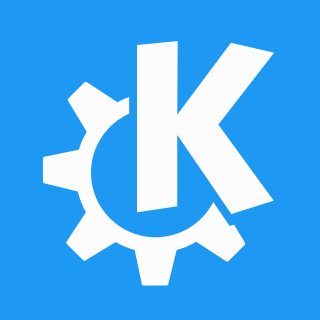 W
WKDE is an international free software community that develops free and open-source software. As a central development hub, it provides tools and resources that allow collaborative work on this kind of software. Well-known products include the Plasma Desktop, Frameworks and a range of cross-platform applications like Krita or digiKam designed to run on Unix and Unix-like desktops, Microsoft Windows and Android.
 W
WKonqueror is a free and open-source web browser and file manager that provides web access and file-viewer functionality for file systems. It forms a core part of the KDE Software Compilation. Developed by volunteers, Konqueror can run on most Unix-like operating systems. The KDE community licenses and distributes Konqueror under the GNU General Public License version 2.
 W
WLilyPond is a computer program and file format for music engraving. One of LilyPond's major goals is to produce scores that are engraved with traditional layout rules, reflecting the era when scores were engraved by hand.
 W
WHomeSite was an HTML editor originally developed by Nick Bradbury. Unlike WYSIWYG HTML editors such as FrontPage and Dreamweaver, HomeSite was designed for direct editing, or "hand coding", of HTML and other website languages.
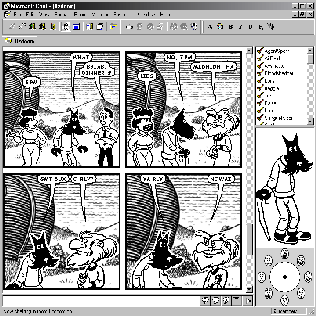 W
WMicrosoft Comic Chat is a graphic IRC client created by Microsoft, first released with Internet Explorer 3.0 in 1996. Comic Chat was developed by Microsoft Researcher David Kurlander, with Microsoft Research's Virtual Worlds Group and later a group he managed in Microsoft's Internet Division.
 W
WMicrosoft FrontPage is a discontinued WYSIWYG HTML editor and website administration tool from Microsoft for the Microsoft Windows line of operating systems. It was branded as part of the Microsoft Office suite from 1997 to 2003. Microsoft FrontPage has since been replaced by Microsoft Expression Web and SharePoint Designer, which were first released in December 2006 alongside Microsoft Office 2007, but these two products were also discontinued in favor of a web-based version of SharePoint Designer, as those three HTML editors were desktop applications.
 W
WMountains is an image analysis and surface metrology software platform published by the company Digital Surf. Its core is micro-topography, the science of studying surface texture and form in 3D at the microscopic scale. The software is dedicated to profilometers, 3D light microscopes ("MountainsMap"), scanning electron microscopes ("MountainsSEM") and scanning probe microscopes ("MountainsSPIP").
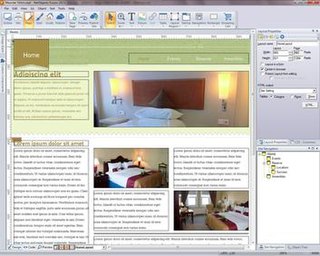 W
WNetObjects Fusion (NOF) is a web design tool, from 1996 to 2001 developed and distributed by NetObjects, Inc., marketed from 2001 until 2009 by Web.com, which acquired the application in 2001, and from July 2009 on distributed again by the re-established NetObjects, Inc.
 W
WThe Netwide Assembler (NASM) is an assembler and disassembler for the Intel x86 architecture. It can be used to write 16-bit, 32-bit (IA-32) and 64-bit (x86-64) programs. NASM is considered to be one of the most popular assemblers for Linux.
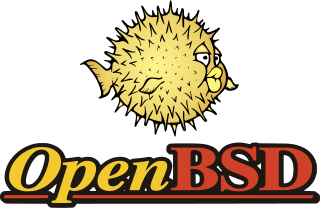 W
WOpenBSD is a security-focused, free and open-source, Unix-like operating system based on the Berkeley Software Distribution (BSD). Theo de Raadt created OpenBSD in 1995 by forking NetBSD. According to the website, the OpenBSD project emphasizes "portability, standardization, correctness, proactive security and integrated cryptography."
 W
WOutlook Express, formerly known as Microsoft Internet Mail and News, is a discontinued email and news client included with Internet Explorer versions 3.0 through to 6.0. As such, it was bundled with several versions of Microsoft Windows, from Windows 98 to Windows Server 2003, and was available for Windows 3.x, Windows NT 3.51, Windows 95, Mac System 7, Mac OS 8, and Mac OS 9. In Windows Vista, Outlook Express was superseded by Windows Mail.
 W
WQuArK, is a free and open-source program for developing 3D assets for a large variety of video games, mostly first-person shooters using engines similar to or based on the Quake engine by id Software. QuArK runs on Microsoft Windows.
 W
Wrsync is a utility for efficiently transferring and synchronizing files between a computer and an external hard drive and across networked computers by comparing the modification times and sizes of files. It is commonly found on Unix-like operating systems. Rsync is written in C as a single threaded application. The rsync algorithm is a type of delta encoding, and is used for minimizing network usage. Zlib may be used for additional data compression, and SSH or stunnel can be used for security. Rsync is the facility typically used for synchronizing software repositories on mirror sites used by package management systems.
 W
WThe Squeak programming language is a dialect of Smalltalk. It is object-oriented, class-based, and reflective.
 W
WUdiWWW is an early, now discontinued freeware graphical HTML 3.2 web browser for 16-bit and 32-bit Microsoft Windows. It was written and developed by Bernd Richter in C/C++ from 1995 to 1996. Following the release of version 1.2 in April 1996, Richter ceased development, stating "let Microsoft with the ActiveX Development Kit do the rest."
 W
WVoyager is a discontinued web browser for the Amiga range of computers, developed by VaporWare.
 W
WWebots is a free and open-source 3D robot simulator used in industry, education and research.
 W
WGNU Wget is a computer program that retrieves content from web servers. It is part of the GNU Project. Its name derives from World Wide Web and get. It supports downloading via HTTP, HTTPS, and FTP.
 W
WWindows NT 4.0 is an operating system that is part of Microsoft's Windows NT family of operating systems. It was released to manufacturing on July 31, 1996, and was launched to retail on August 24, 1996. It was Microsoft's primary business-oriented operating system until the introduction of Windows 2000. Workstation, server and embedded editions were sold; all editions feature a graphical user interface similar to that of Windows 95.
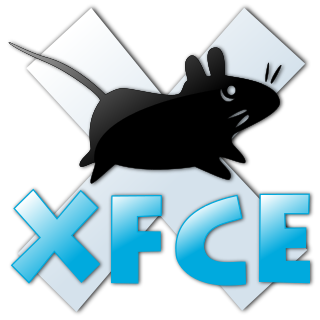 W
WXfce or XFCE is a free and open-source desktop environment for Linux and BSD operating systems.
 W
WYaST is a Linux operating system setup and configuration tool.